
Spooky season is in full swing, meaning there may be some heightened paranormal activity afoot. In fact, a survey conducted by YouGov revealed that two in five Americans believe ghosts are real, while one in five people say they’ve actually encountered one.
The existence of ghosts may be up for debate, but one of the most persistent beliefs is that our animals can sense spirits or paranormal activity. We’ve all witnessed the scene in scary movies or TV shows, when the tiny dog barks at the door but no one is there. Sure, the movie may be fake, but many pet owners have noticed their dog or cat do the same in real life.
Of course, there’s only one thought that enters a pet owner’s mind when this occurs – that their animal is obviously interacting with a ghost. To set the record straight, we spoke with two animal communicators – aka, pet psychics – to learn whether our animals are really channeling the other side.
Why do we believe our pets can see ghosts in the first place? According to Phoebe Hoffman, an animal communicator and intuitive guide based in New York City, it has a lot to do with their heightened senses.
“Pets are living off of energy, whether it’s our energy or energy that we are not privy to, because we’re so limited in our senses compared to them,” Hoffman tells us. “Now, can I say that what they’re seeing is ghosts? I don’t know that because I’ve never seen a ghost. I’m not seeing what they’re seeing, but I’ve had many experiences with my own animals – which happen to be cats – where they are having an absolute moment with something that’s there that only they can witness.”

It goes without saying that animals have senses that are unknown to humans. When it comes to our beloved canines, dogs have the ability to hear much higher-pitched noises than their owners. The average adult human can’t hear sounds above 20,000 Hertz (Hz), while dogs can hear sounds as high as 47,000 to 65,000 Hz, per the American Kennel Club.
Meanwhile, cats are known to have great eyesight, especially in the dark. According to Texas A&M University, felines can dilate their pupils in low-light settings and they have a special reflective layer called the tapetum lucidum, which can reflect more light to the back of the eye.
“Non-human animals sense things in different ways than humans do. Cats, for instance, the way they see things is different from the way humans see things. Their eyesight is different, they can definitely perceive energies that we can’t or things that aren’t visible to the human eye,” Olivia LaBarre, an animal communicator and Reiki specialist based in NYC, tells us. “Most of the animals I communicate with have increased senses beyond the five senses.”

But what about those undeniable moments when our dog or cat appears to be reacting – or interacting – with something we can’t see? When they begin to bark or meow at nothing visible, stand in the corner, play with an object that belonged to a deceased family member, or assume behaviours that are characteristic of a former pet? For LaBarre – who’s been an animal communicator and grief worker for five years – her clients have noticed that, after one of their pets dies, their living animal will even start taking on some of the behaviours of the animal who passed.
When these moments occur, it’s important to look out for certain signs or signals that your dog or cat’s behaviour has suddenly shifted. This can look like playing with something that isn’t there, tilting their head, arching their back, or wagging their tail.
As for what pet owners should do when they believe their beloved animal is interacting with a ghost, experts agree to just sit back and let it happen. “Allow it, observe it, and just pay attention because it might be about you. Humans are very unaware of the mysteries of the universe. Animals, they’re tapped in. They are aware that energy doesn’t die,” says Hoffman. “Just let it happen. It’s not a bad thing.”
However, there could be the slight off chance that a poltergeist from the next Paranormal Activity instalment just so happens to be living in your kitchen. Then, of course, it’s time to call in the experts… or an exorcist.
Our pets’ heightened senses – and sometimes their silly, quirky, and erratic behaviour – has played into the belief that dogs and cats can see ghosts. Still, there’s much uncertainty about whether this long-standing superstition is actually true.
“We are so limited in our ability to see what the naked eye cannot see. Animals have this window into watching spirits and energy,” says Hoffman. “But as far as a ghost? That I don’t know, but I know they’re seeing something.”
Although it continues to be a mystery whether our pets’ senses are able to pick up on energies or spirits, pay close attention to your dog or cat this spooky season. Who knows what life forms will be lurking this Halloween?
15 Things Moms Do That Make Them Even More Incredible
Each pregnancy alters your body irrevocably. And we don’t mean the stretch marks or the scars. We mean the forever-changed DNA. Ask any new mother and she’ll list out a litany of things that are now different for her. Like a forgetful mommy brain that, according to science, makes the mother-child bond stronger.
We at Bright Side salute all moms and believe that they are real-life superheroes. To honor all mothers, we found some mommy facts proving there’s nothing like a mother’s love. Or the science behind it.
1. Motherhood changes you, and your DNA.
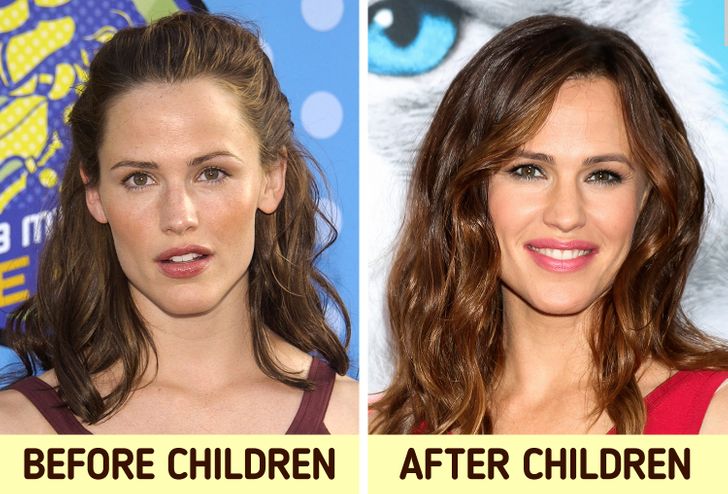
A chimera is a legendary beast made of different animals. And we are likening mothers to chimeras because every child that a mother carries leaves their DNA inside her. Basically, fetal cells enter a mother’s bloodstream and stay in her body forever. Researchers allege that these cells can affect the mother both positively and negatively. On one hand, it can speed up healing but on the flip side, it can increase the risk of cancer.
So when they say motherhood changes you, it does so at an elemental level as well. Jennifer Garner’s stunning countenance reflects just that.
2. The baby can taste what their mother eats.

Studies show that what a mother eats flavors the amniotic fluid. Something a baby gulps down several times a day. Basically, a baby can taste what their mother eats from within the womb.
A study showed that infants whose mothers ate carrots while pregnant seemed to enjoy cereal prepared with carrot juice more than others. So if you want to develop your baby’s palate for healthy, crunchy veggies, chow down on them while you are pregnant.
3. Kissing babies is more “healing” than we think.

Any new mom will tell you that the urge to kiss a newborn is intense. It’s innate and biological in nature. And science says that when mothers kiss their babies, it’s not just love, it’s medicine.
A mother’s body samples the pathogens found on the baby’s face, and more magic happens within her own body. Especially to her breastmilk, the main source of nutrition and immunity for the baby.
4. Pregnant women make enormous amounts of estrogen.

Pregnancy sends a woman’s body into overdrive. The uterus expands to 500 times its normal size and then shrinks back after birth. The blood volume increases and to tackle that, the heart expands a little too.
And it’s not just this, a woman makes more estrogen in a single pregnancy than she would in her whole lifetime if she never got pregnant. There’s a reason why women are exhausted when expecting and need sleep and rest for a healthy delivery and recovery.
5. A mother’s smile is near magical.

Moms are near magic, and so is their smile or affection. While you need your mother at all ages, it’s the helpless infant who is most dependent on their mom.
Studies show that when mothers smile, coo, and show affection to their babies, their heartbeats synchronize into the same beat. So if a baby is distressed, it calms them down. This is the reason why newborns need mothers the most when they are fussy and refuse to be calmed down by other family members.
6. Carrying boys can make you more nauseous.

There’s a reason why little boys are made of “snips and snails and puppy dog tails” or so goes the nursery rhyme. This is because mothers who carry boys are more likely to be nauseous in the first and second trimesters, a study shows.
This is not to say that women expecting girls cannot have morning sickness or that all women who carry boys have more nausea. It’s just that if you are expecting a boy, chances are you may experience more nausea or food aversions.
7. Babies name their mamas.

“Mom, mama, mummy, mamma, ammi, ma, me, emi, mimi.” There’s a pattern in the name for mother in all languages and this is because the “em” sounds are usually the first vocalization for a baby. It’s also the easiest sound a baby can make while babbling. And so it’s our babies who name us and call us mamas.
8. The mommy brain fog is very real.

If you see new moms looking lost, there’s a scientific reason for this. Each pregnancy affects a woman’s brain and makes her lose gray matter. The effects last for around 2 years. Science says that this temporary bewilderment makes mothers closer to their babies as well.
That said, the gray matter regenerates and any confusion or forgetfulness is passing. The bond between a mother and her child is permanent.
9. A mother’s voice is as soothing as a hug.

A study has shown that a mother’s voice, even on the telephone, is as calming as a hug. Researchers introduced stress to a group of girls and then had 1/3 of them hug their mothers, another 1/3 of them talk to their mothers, and 1/3 watched an emotionally neutral film. The girls who spoke to their mothers calmed down much faster, just like those who hugged.
This proves that if you are under stress, your mother’s voice can flood oxytocin into your bloodstream, making you feel better. And we think Jennifer Garner already knows that, pictured here with her mother.
10. Babies can cry in the womb.
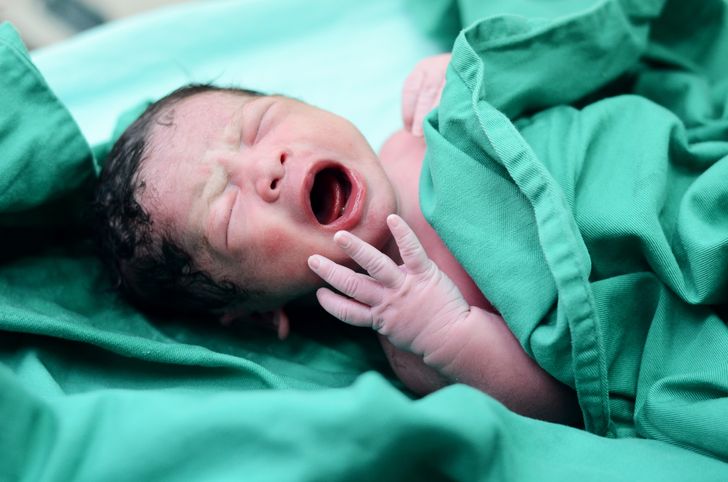
The baby’s first cry is not post-birth, rather studies now show that they can express displeasure inside the womb. This can happen as early as 28 weeks gestation.
Researchers played low-decibel sounds on the mother’s belly and could see that the baby opened their mouth and exhibited crying-like behavior. But it’s a silent cry. Researchers also added that this in-vitro crying was nothing the mother should worry about.
11. Pregnancies leave women vulnerable to tooth decay.
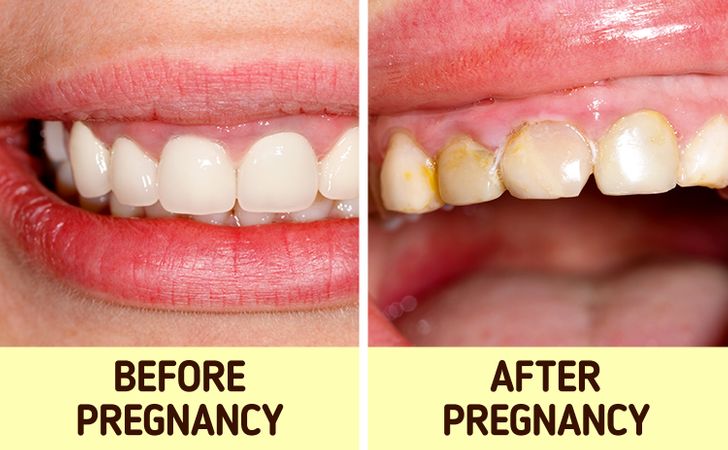
Pregnant women are at risk for tooth decay and there are many reasons why. The changes in diet due to cravings may give some women a sweet tooth and the hormones that cause nausea, meaning more acidity on your mouth, to mention a few. This leads to gum disease and decay.
A simple way to prevent it all is by making oral health a priority, especially when you are pregnant.
12. The earliest milk bottle use came to be 7,000 years ago.

As it turns out, the breast/bottle debate is prehistoric. And mamas back then were pretty innovative too. Researchers have found little clay vessels, some shaped into mythical animals with hands and feet, with milk residue in them.
The earliest of them date back to 7,000 years ago and have been identified as prehistoric feeding bottles for babies. The dairy residue has been identified as breastmilk and milk from a cow, sheep, or goat.
13. The Ice Age made human breast milk more nutritious.
Human beings need sunlight to survive because our bodies only synthesize vitamin D in the sun. Allegedly, the last Ice Age should have wiped us out because newborns were not getting any vitamin D, considering the intense cold and lack of sunshine.
Scientists believe that a genetic tweak happened and mothers could transmit vitamin D and essential fatty acids to their newborn babies, and this may have ensured human survival.
14. Pregnancies can be contagious.

A study of more than 30,000 women conducted in Germany has indicated that pregnancy is contagious. It spreads from woman to woman in workplaces, in an endearing way. The results stated that “in the year after a colleague gives birth, transition rates to first pregnancies double.”
So if you are in the workplace and someone is pregnant, expect more pregnancies to pop up.
15. Most mammal moms carry their babies on the left.
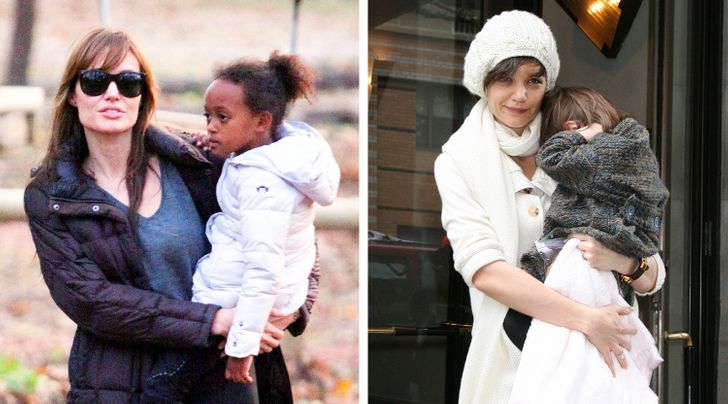
Human mothers and even some mammal mamas cradle their babies on the left side of their bodies, closer to their heart. This is irrespective of a left-handed or right-handed mom. Science says that all the sensory information that comes from the left side of the body is processed on the right side of the brain.
The right side is where all the emotions are. And surprisingly enough, babies prefer to keep their moms on their left side as well, so it works for both mom and babe.
Bonus: Celebrity moms speak about motherhood.
Rosie Huntington-Whiteley

“I did start to feel this new sense of life. And now my confidence is so much greater.”
Lauren Burnham Luyendyk

“Breastfeeding is one of the hardest things I’ve ever done. I’m in awe of the ladies that make it look so effortless, and even the ones who don’t, you are superheroes.”
Do you have any other experiences as a child or a mother that show us that moms are actual superhumans? Share your motherhood stories with us and spread the joy.
Please note: This article was updated in June 2022 to correct source material and factual inaccuracies.
Preview photo credit laurenluyendyk / Instagram

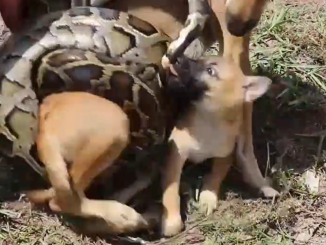
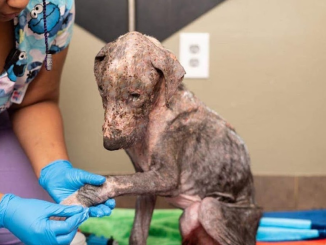
Leave a Reply